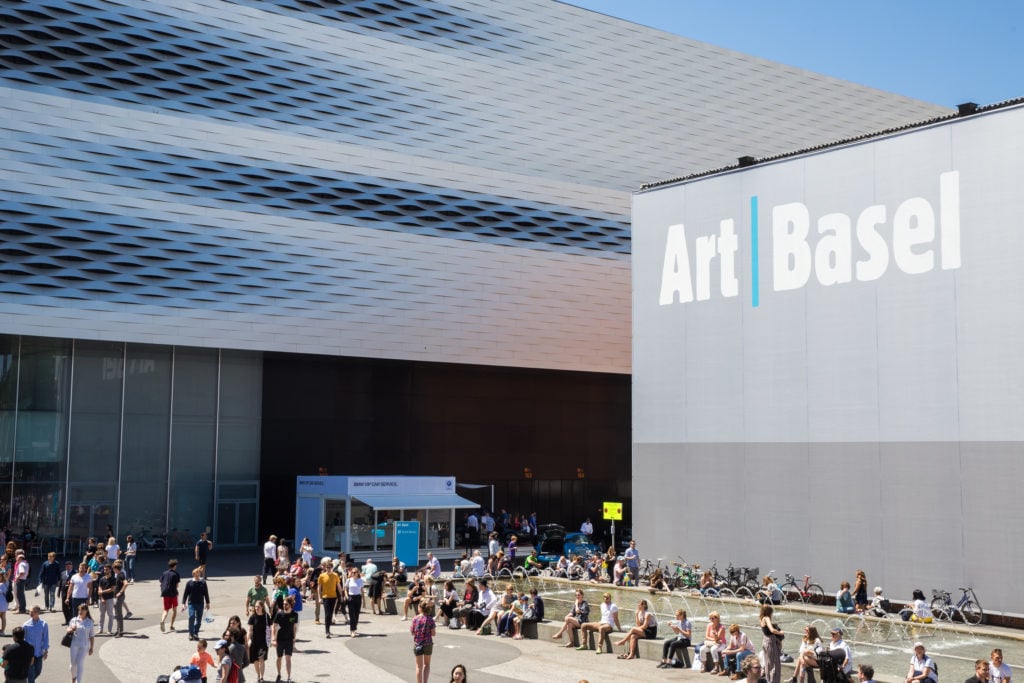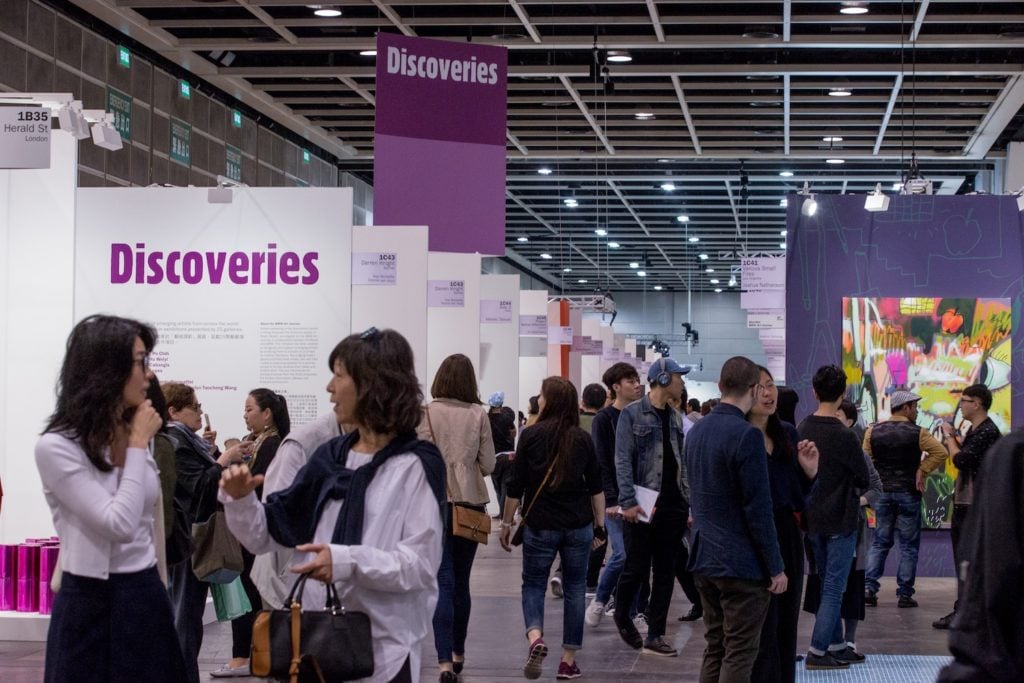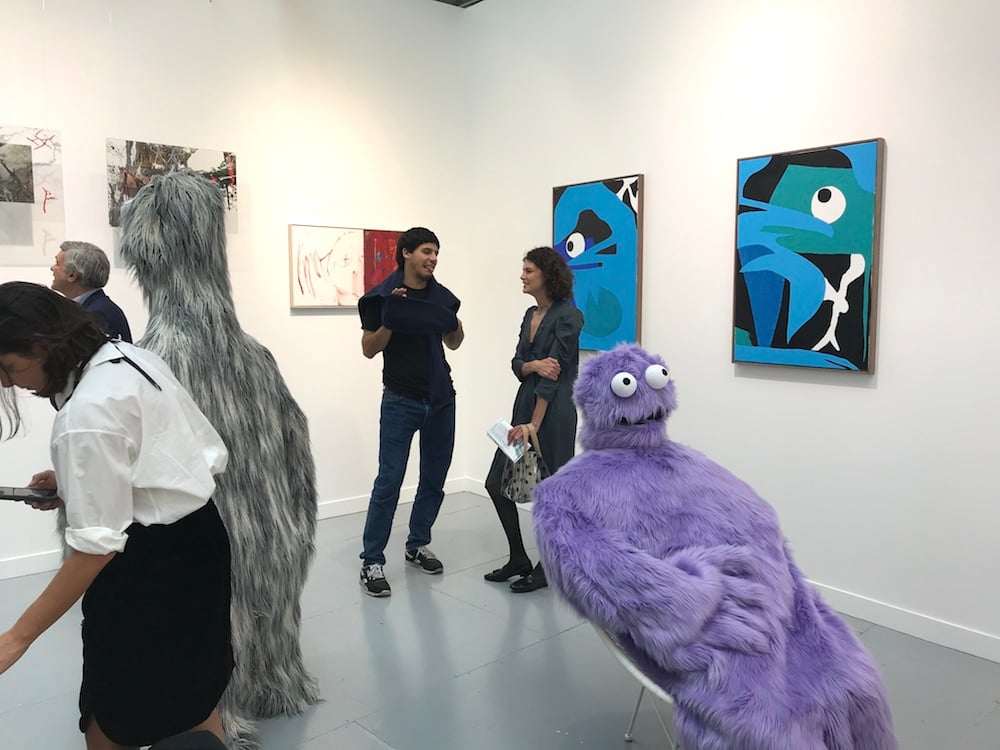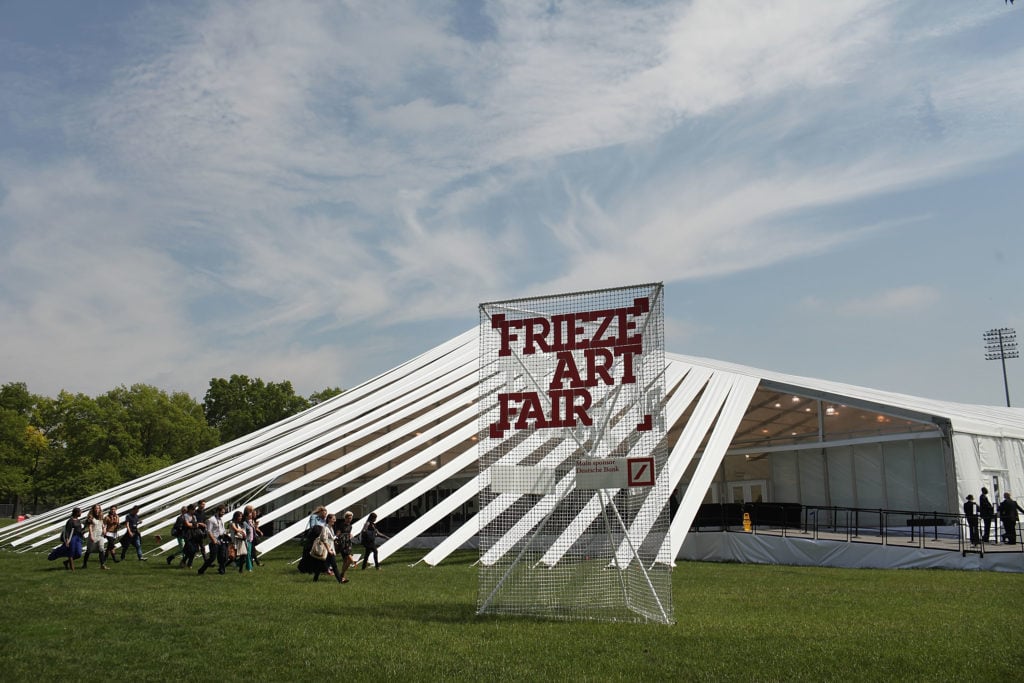Every Monday morning, artnet News brings you The Gray Market. The column decodes important stories from the previous week—and offers unparalleled insight into the inner workings of the art industry in the process.
This week, looking for guidance outside the cloistered world of the arts….

Art Basel in Basel, Switzerland. Photo courtesy of Art Basel.
REPORTER AT LARGE
On Wednesday, the Wall Street Journal hosted an op-ed from two titans of finance troubled by a danger facing our own industry in only slightly different clothing—and one particularly worth keeping in mind as we roll into Art Basel week.
Warren Buffett, chairman of Berkshire Hathaway and inarguably one of the most successful investors of all time, teamed up with JP Morgan Chase chairman and CEO Jamie Dimon to deliver a reasoned plea to keep our eyes on the horizon instead of our own navels. Titled “Short-Termism Is Harming the Economy,” the piece mainly encourages the decision makers at publicly held American companies to quit the practice of forecasting quarterly earnings (i.e. making public declarations about how much money they expect to make in the next three months).
Why? Because in Buffett and Dimon’s experience, “quarterly earnings guidance often leads to an unhealthy focus on short-term profits at the expense of long-term strategy, growth, and sustainability.”
In other words, once you start nailing your business to the cross with hard expectations for the revenue you’ll pile up in the next 13 weeks, it incentivizes everyone to focus on that narrow-minded goal—and ignore the bigger, more meaningful initiatives that would actually add value to the company (and the economy).
Now, with the exception of Sotheby’s, most art sellers are privately held companies that don’t have to worry about the negative effects of quarterly guidance. At the same time, it would be a mistake to assume that they can’t still tumble head first into the spike pit of short-termism. And one of the strongest reasons why is the importance of art fairs in the industry’s concept of success.

Visitors at Art Basel Hong Kong in 2017. Photo courtesy of Art Basel.
FAIR WARNING
Major art fairs don’t create the same pressure as quarterly earnings forecasts; I would argue that they create more. Just consider the basic numbers.
Between this week and year’s end, we’ll have Art Basel’s mothership edition, Frieze London and Frieze Masters, FIAC, and Art Basel Miami Beach.
The first half of 2019 will be even more packed. January will bring Zona Maco and, for the first time, Frieze Los Angeles. Then we’ll have the Armory Show and Art Basel Hong Kong in March, plus Frieze New York and (probably) TEFAF New York’s Spring edition in May, before we’re right back staring at Switzerland again next June.
That’s another six major fairs in six months, bringing the overall tally to at least nine for the entire year. And of course, even that number leaves out the many important regional and satellite fairs that orbit these gas giants like habitable moons. Compare those nine fairs to the four quarterly forecasts you’d have to make as a public company, and the demands of the gallery business start to breathe a little heavier on the back of your neck.

Installation view of the Freedman Fitzpatrick booth at FIAC 2017, featuring works by Stefan Tcherepnin. Photo by Lorena Muñoz-Alonso.
APPLY YOURSELF
Although there is an element of financial reporting built into art fairs—namely, the highly dubious sales reports we in the press are obligated to compile during their run—no gallery or dealer goes into trade shows publicly projecting their sales. But the ever-rolling wave of art fairs still casts a similar shadow over all but the very biggest sellers. Because while they aren’t forecasting how much they will sell at each event, they are forecasting what they will show and how they will show it.
For anyone who hasn’t been through it, the art fair application process is laborious, time-consuming, and mentally draining. It’s like trying to get into college every other month for the rest of your life. Remember, you aren’t just asked to propose a compelling selection of work for each fair. You’re also asked to design a compelling (or at least, appropriate) booth to accommodate it, too.
This is harder than it sounds. I can’t quantify how many hours my former colleagues and I spent debating the number and placement of walls for fair presentations while I was still working in the gallery sector, even when all we were showing were paintings.
But I can tell you that, each time, the commitment was significant, drawn out over a number of weeks, and (at least to me) undeservedly amped up the appeal of disappearing without a trace into an alternate life as, like, a ranch hand somewhere in the American Southwest. That’s right, the process could be so ugly that it literally got me to start fantasizing about shoveling shit. And I’m pretty sure I wasn’t alone.
The task is especially hard for galleries without deep enough pockets and a deep enough bench to include a dedicated, year-round fair team. Instead, regular staff has to focus so much time and energy on the trade shows that the day-to-day business of the gallery suffers—a fact that inevitably leads to less time and investment on exhibitions, publishing, artist development, and many more long-term goods.
I’m not saying that the focus on fairs doesn’t make sense. Given how important sales there have become to most dealers—and how few buyers bother to walk into the average gallery space these days—the incentives compel almost everyone to slant their resources in this direction.
But the troubling reality is that fairs’ brief time span and fixed seasonality sometimes present variables that no amount of smart planning can overcome. Remember a couple of years ago when the industry freaked out about the potential dual-fisted deathblow of Trump’s win and the Zika virus on Art Basel Miami Beach? Or how about last month, when a heat wave and underperforming air conditioning made collectors at Frieze New York feel like they were being asked to make hundred-thousand-dollar decisions inside the boiler room of a steamboat?
Buffett and Dimon show that this same concern appears back in the regular business sector, too. They write, “Companies frequently hold back on technology spending, hiring, and research and development to meet quarterly earnings forecasts that may be affected by factors outside the company’s control, such as commodity-price fluctuations, stock-market volatility, and even the weather.”
And yet, galleries (and their artists) persist.

Outside the 2012 edition of Frieze New York. Photo by Spencer Platt/Getty Images.
YOU DON’T NEED TO BE A WEATHERMAN…
While Buffett and Dimon can petition business owners to quit quarterly forecasting, I don’t know that there’s a solution to the time-limited constraints of the art fair.
Organizers and their selection committees need to be able to review proposals in advance so they can determine who deserves to exhibit at the event and who doesn’t. And even if fairs began, say, admitting certain galleries with a demonstrated record of excellence through a scaled-back application, exhibitors would still obsess over the contents and layout of their booths, because those elements still help determine their sales results to a large extent.
Because they draw resources away from longer-term investment, fairs generally should not be considered signals of where art, on a substantive level, should be headed, the same way that a company racing after its own quarterly earnings guidance won’t lead it to innovation and sustainability.
Instead, the best we may be able to do is to keep in mind that art fairs are inherently short-term indicators. What we see at each is generally a group of galleries and dealers making projections under duress about what will sell (or in some cases, communicate the right idea about their identity) only a month or two after they last went through the same process.
That doesn’t make fairs evil. But it should remind us of why certain gallerists are pulling the ripcord on the whole trade-show mission—as well as what Basel and its satellites will, and generally won’t, show us this week, no matter how hard we look.
[The Wall Street Journal]
That’s all for this edition. ‘Til next time, keep your head up and your eyes on the long view.









